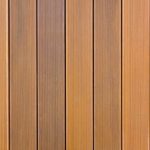Woodworking is a craft that allows individuals to create beautiful and functional pieces using their own two hands. One essential tool that every woodworker needs is a sturdy and reliable woodworking table. In this article, we will guide you through the process of making your own woodworking table from start to finish.
Making your own woodworking table has numerous benefits, including the ability to customize it to suit your specific needs and preferences. Whether you’re a seasoned woodworker or just starting out, having a dedicated space to work on your projects can greatly enhance your productivity and enjoyment of the craft.
The steps involved in making a woodworking table may seem intimidating at first, but with the right tools, materials, and guidance, it is an achievable project for any DIY enthusiast. In the following sections, we will break down each step in detail, from gathering the necessary tools and materials to putting on the finishing touches. So let’s get started and embark on this rewarding journey of building our very own woodworking table.
Gathering the necessary tools and materials
| Tool | Function |
|---|---|
| Saw | Cutting wood to desired dimensions |
| Drill | Creating holes for screws and attachments |
| Measuring tape | Taking precise measurements for dimensions |
In addition to these essential tools, there are various other tools that can be helpful during different stages of the construction process. It is important to have adequate safety equipment such as safety glasses, gloves, and a dust mask to protect yourself while working with wood.
Alongside selecting suitable tools, gathering the right materials is equally important. The main material required for building a woodworking table is wood. Choosing high-quality wood will not only ensure durability but also enhance the overall look of the table. Other materials include screws or nails for assembly, sandpaper for smoothing surfaces, and finishing products like varnish or oil for preserving and protecting the wood.
When searching for materials, it is advisable to visit local hardware stores or specialized online shops that offer a wide range of quality options. Consulting with professionals in these stores can provide valuable guidance when selecting the appropriate type and amount of wood needed for your specific project.
By properly gathering all necessary tools and materials at the outset, you can proceed with confidence in constructing your own woodworking table.
Choosing the right design and dimensions
When it comes to making your own woodworking table, selecting the right design and dimensions is crucial in creating a workspace that suits your needs. The design determines not only the aesthetic appeal of the table but also its functionality and practicality. Meanwhile, figuring out the appropriate dimensions ensures that the table fits comfortably in your workshop or garage while providing enough space for your projects.
The first step in choosing the right design is considering your specific woodworking needs and the available space in your workshop. If you primarily work on smaller projects, a smaller tabletop may be suitable, while larger projects may require a more expansive work surface. Additionally, think about whether you need any specialized features such as built-in storage or an adjustable height mechanism. Some popular woodworking table designs include workbenches with drawers or shelves for organizing tools and materials.
Once you have determined the overall design, it is time to focus on the specific dimensions of your woodworking table. Measure the available space where you plan to place the table and consider any additional equipment or storage cabinets that will accompany it. It is essential to leave enough room around the table for comfortable movement and accessibility.
| Design | Pros | Cons |
|---|---|---|
| Standard Workbench with Drawers | – Provides extra storage for tools and materials.
| – Requires additional space due to drawers.
|
| Folding Workbench | – Allows for easy storage when not in use.
| – May have weight limitations due to folding mechanism.
|
| Adjustable Height Workbench | – Offers flexibility in working positions.
| – Requires additional mechanisms for height adjustment.
|
Overall, choosing the right design and dimensions for your woodworking table requires careful consideration of your personal needs, available space, and desired features. By selecting a design that aligns with your workflow and workspace, you can create a functional and efficient area to carry out your woodworking projects.
Preparing and cutting the wood
To successfully create a woodworking table, it is crucial to properly prepare and cut the wood. This section will provide step-by-step instructions on how to prepare the wood, techniques for accurate cutting, and safety precautions to keep in mind.
1. Preparing the Wood:
Before beginning any cutting or assembly, it is important to properly prepare the wood. Start by inspecting each piece of lumber for any splinters or rough spots. Use sandpaper to remove any imperfections and create a smooth surface. Be sure to wear protective gloves during this process to avoid splinters.
2. Accurate Cutting Techniques:
To achieve precise cuts, it is recommended to use a table saw or circular saw. Before starting the cutting process, measure and mark the desired dimensions on the wood using a measuring tape and pencil. When using a table saw, adjust the blade height according to your desired depth of cut. Ensure that all safety measures are in place when operating these tools, such as using safety goggles and keeping your hands away from the blade.
3. Safety Precautions:
While working with wood and power tools, it is essential to prioritize safety. Always wear protective gear such as safety glasses and ear protection when operating power tools. Keep your work area clear of clutter and ensure that you have a stable working surface before starting any cuts. Additionally, never rush through cutting tasks – take your time to ensure accuracy and precision.
By following these steps for preparing and cutting the wood, you will be well on your way to creating a sturdy woodworking table. Remember to prioritize safety throughout the process to prevent accidents or injuries. In the next section, we will delve into assembling the table frame and ensuring its stability for long-lasting use.
Assembling the table frame
Assembling the table frame is a crucial step in building a woodworking table. This section will provide a detailed explanation of the assembly process, including attaching legs and support beams. It will also offer tips on ensuring stability and sturdiness of the frame, as well as options for joining the pieces together.
To begin assembling the table frame, start by positioning the legs at each corner of the tabletop. Make sure they are aligned properly and perpendicular to the tabletop surface. Use clamps to hold them in place temporarily while you attach them securely.
Next, attach support beams between the legs to provide additional stability to the table frame. Measure and cut these beams according to your desired dimensions, ensuring they fit snugly between each leg. Attach them using screws or other suitable fasteners, making sure they are firmly secured.
When attaching the legs and support beams, it is important to ensure that everything is level and square. A level surface will prevent wobbling or instability when working on projects. Use a carpenter’s square or a measuring tape to check that all angles are 90 degrees.
To further enhance the strength and stability of the table frame, consider adding cross braces between the legs or diagonal supports from corner to corner. These additional supports can help distribute weight evenly and prevent any movement while using the table.
When joining the pieces together, there are several options available. One common method is using screws, which provide strong connections if used properly. Pre-drill pilot holes before inserting screws to prevent splitting of wood. Another option is using dowels for a more concealed and aesthetically pleasing connection. Pocket holes can also be used where screws are inserted at an angle into pre-drilled holes on one piece of wood which connects it with another piece.
By following these steps and ensuring a sturdy assembly process, you will have a solid foundation for your woodworking table that can withstand regular use and heavy projects.
Adding the tabletop and finishing touches
Attaching the tabletop securely
Once you have completed assembling the table frame, it is time to attach the tabletop. This is a crucial step that requires precision and attention to detail to ensure a secure and stable workspace. Here are the steps to follow:
- Position the tabletop: Place the tabletop on the frame, making sure it aligns perfectly with the edges. Take measurements and use clamps to hold it in place if needed.
- Mark the screw holes: Use a pencil or marker to mark where you will be drilling holes to attach the tabletop. Ensure that you have evenly spaced markings along each side of the frame for optimal support.
- Drill pilot holes: Using an appropriately sized drill bit, carefully drill pilot holes through the marked points on both the tabletop and frame. Pilot holes prevent wood from splitting during screw insertion.
- Attach screws: With pilot holes drilled, use wood screws to attach the tabletop securely onto the frame. Start by screwing in one corner, making sure it sits flush against the frame surface. Then proceed along each side, gradually tightening all screws until they are snug but not over-tightened.
- Check for stability: Once all screws are in place, carefully check for any wobbling or instability in your woodworking table. Make adjustments as needed to ensure a level and sturdy surface.
Achieving a smooth and level surface
After attaching the tabletop, it is important to achieve a smooth and level surface for precise woodworking tasks. Here are some tips on how to achieve this:
- Sanding techniques: Use sandpaper or an orbital sander to smooth out any uneven surfaces on both the tabletop and frame. Start with coarse-grit sandpaper and gradually move to finer grits for a smoother finish.
- Planing techniques: If there are visible imperfections or high spots on your tabletop, consider using a hand plane to level them out. Take small strokes and frequently check the surface for evenness.
- Filling in gaps: If there are any gaps between the tabletop and frame, you can use wood fillers or epoxy resin to fill them in. Once dry, sand down the filled areas until they are flush with the rest of the surface.
- Checking for levelness: Use a leveling tool or ruler to ensure that your tabletop is perfectly level from all directions. If it is not, make adjustments by adding shims or sanding down uneven areas.
Suggested finishes
Adding a finish to your woodworking table not only enhances its appearance but also protects the wood from moisture and wear. Here are some suggested finishes you can consider:
- Varnish: Apply multiple coats of varnish to bring out the natural beauty of the wood while providing a protective layer against stains and scratches.
- Oil finishes: Linseed oil, tung oil, or Danish oil can be used to deepen the color of the wood and create a smooth finish. Apply several coats and allow sufficient drying time between each coat.
- Wax: Applying wax on the tabletop provides a soft sheen and adds an extra layer of protection against spills and minor impacts. Regular waxing helps prolong the life of your woodworking table.
Before applying any finish, ensure that you have cleaned off any sawdust or debris from sanding. Follow the manufacturer’s instructions for application methods and drying times specific to your chosen finish.
Customizing your woodworking table
Once you have completed the main construction of your woodworking table, you may choose to add some customizations to make it truly fit your needs and preferences. Customizing your table can not only enhance its functionality but also add a personal touch to your workspace. Here are some suggestions for optional customizations:
- Adding drawers or shelves: Consider incorporating storage options into your table design by adding drawers or shelves. This will provide convenient storage for tools, accessories, and materials, keeping them within reach while you work. Drawers can be useful for organizing small items like screws and nails, while shelves can hold larger tools or reference books.
- Personalizing the table: Consider personalizing your table by adding elements that reflect your personality or interests. This could include painting the tabletop with a unique design or incorporating a logo or emblem that represents something meaningful to you.
- Practical and decorative elements: Think about what practical or decorative elements you would like to incorporate into your woodworking table. For example, you could install a pegboard on one side of the table for hanging frequently used tools, or attach a clamp holder to keep clamps within easy reach. Additionally, consider adding hooks or magnetic strips on the side of the table for storing frequently used hand tools.
Remember, when customizing your woodworking table, it’s important to ensure that any additions do not compromise the stability and functionality of the table as a whole. Take into account the weight-bearing capacity of the frame and ensure that any added elements are securely attached.
Customizing your woodworking table allows you to tailor it specifically to suit your needs and preferences, making it an even more valuable tool in your workshop. Be creative and think outside the box when considering customizations – after all, this is an opportunity for you to truly make it yours.
Maintenance and care
Proper Maintenance for Longevity
Once you have built your woodworking table, it is important to establish a routine maintenance schedule to ensure its longevity. Proper care will not only keep your table looking good, but it will also help prevent any potential damages that may occur over time. By following some simple maintenance practices, you can enjoy your custom-made woodworking table for years to come.
Cleaning and Protection
Regular cleaning is essential to keep your woodworking table in top condition. Dusting the surface regularly with a soft cloth or using a vacuum with a brush attachment will help remove any debris or sawdust that may accumulate on the tabletop. For more stubborn residue, use a mild soap and water solution to gently clean the surface, being careful not to saturate the wood. After cleaning, make sure to dry the table thoroughly.
To protect the wood from spills and stains, consider applying a quality wood sealer or wax finish. These protective coatings create a barrier that helps resist moisture and prevents liquids from penetrating into the wood grain. Additionally, they add an extra layer of shine and enhance the natural beauty of the wood.
Oiling and Repairing Damages
To maintain the wood’s integrity and prevent it from drying out or cracking, periodically applying oil is recommended. Choose a suitable oil for your woodworking table, such as linseed oil or mineral oil, and follow the manufacturer’s instructions for application. Oiling not only nourishes the wood but also adds richness to its color.
Over time, your woodworking table may experience minor damages like scratches or dents. It is important to address these issues promptly to prevent further damage. For shallow scratches, gently sanding them with fine-grit sandpaper followed by application of matching stain or touch-up marker can effectively minimize their appearance. When encountering deeper scratches or dents, filling them with wood filler before sanding and staining may be necessary.
Storing Tools and Materials
To prolong the lifespan of your woodworking table, proper organization and storage of tools and materials are crucial. Cluttered workspaces can lead to accidental damage or scratches on the table surface. Consider installing shelves or drawers directly onto the table for convenient storage. Alternatively, invest in a separate tool cabinet or toolbox to keep your tools safely stored and easily accessible.
By implementing these maintenance practices, you can ensure that your custom-made woodworking table remains a functional and beautiful piece of furniture for many years. Taking care of your table demonstrates a commitment to preserving the craftsmanship that went into its creation, while also providing you with a reliable workspace for all your future woodworking projects.
Conclusion
In conclusion, making a woodworking table is a rewarding and fulfilling DIY project that allows you to create a custom piece specifically tailored to your needs. Throughout this article, we have highlighted the key steps and considerations involved in creating your own woodworking table.
From gathering the necessary tools and materials to choosing the right design and dimensions, each stage of the process requires careful planning and attention to detail. By following the step-by-step instructions provided, you can ensure that your table is sturdy, stable, and built to last.
Furthermore, customization options allow you to personalize your woodworking table even further. Whether it’s adding drawers or shelves for additional storage or incorporating practical or decorative elements, you can make your table truly unique.
Lastly, it is important to remember that maintaining and caring for your woodworking table is essential for its longevity. Regular cleaning, oiling, and repairs will help preserve the wood and keep it looking its best over time.
Embarking on the journey of creating your own woodworking table not only provides practical benefits but also a sense of accomplishment and pride in knowing that you created a functional piece of furniture with your own hands. So don’t hesitate to get started on this rewarding project-your customized woodworking table awaits.
Frequently Asked Questions
Is it cheaper to buy or build a workbench?
When it comes to deciding whether it is cheaper to buy or build a workbench, there are a few factors to consider. Building your own workbench allows you the flexibility to customize the design and size to meet your specific needs. However, constructing a workbench requires materials, tools, and skills.
If you already have the necessary tools and materials at hand, building your own workbench may be more cost-effective. On the other hand, purchasing a pre-made workbench can save you time and effort in construction but might come with a higher price tag. Ultimately, the answer to this question depends on personal preferences, budget constraints, and available resources.
What is the best surface for a woodworking table?
When it comes to choosing the best surface for a woodworking table or workbench, hardwood is often considered one of the ideal options due to its durability and stability. Hardwoods like maple or birch are commonly used as they can withstand heavy use and resist dents from tools or projects placed on top of them. The surface should be well-sanded and smooth to avoid scratches on delicate woodworking projects.
Additionally, some woodworkers prefer adding a layer of sacrificial material like Masonite or laminate on top of the hardwood surface for better protection against accidental cuts or glue spills. Overall, selecting a sturdy hardwood surface that suits your specific woodworking needs is crucial for creating an efficient workspace.
How do you make a simple workbench?
Making a simple workbench can be achieved with basic tools and materials readily available at most hardware stores. Start by determining the dimensions you desire for your workbench based on available space and personal preference—typical widths range between 24-36 inches while lengths range from 48-96 inches. The simplest approach involves using standard dimensional lumber like 2x4s or 4x4s for legs and frame construction along with plywood sheets for the top surface layer.
Securely join all components together using screws or bolts ensuring stability and strength of the structure; reinforcing joints with additional support is advised. Consider adding a lower shelf for storage and tools accessibility. Ultimately, the key to making a simple workbench is focusing on functionality while adapting the design to your specific woodworking needs and available space.

Hi everyone! I’m a woodworker and blogger, and this is my woodworking blog. In my blog, I share tips and tricks for woodworkers of all skill levels, as well as project ideas that you can try yourself.





